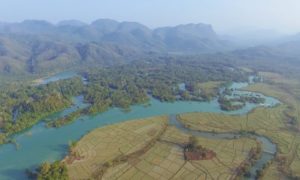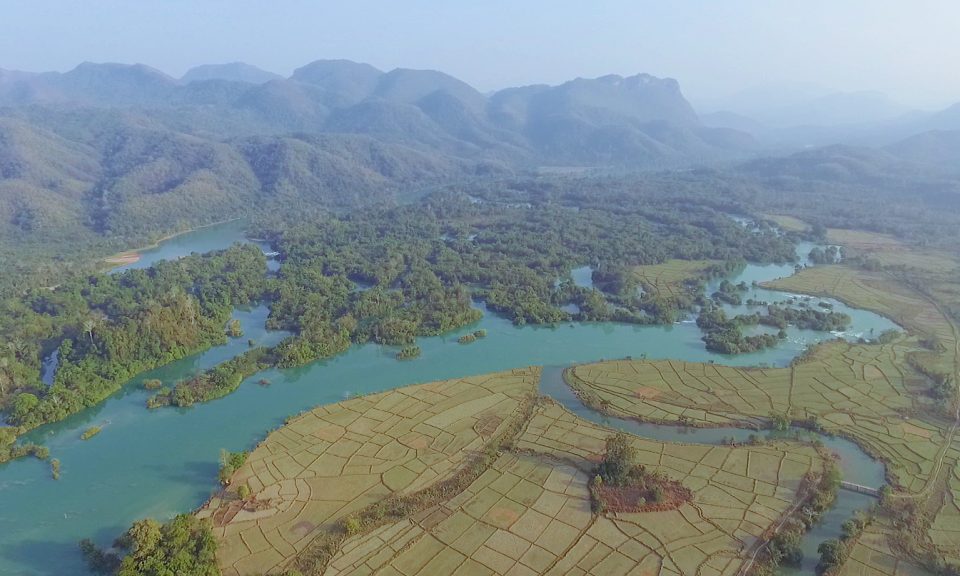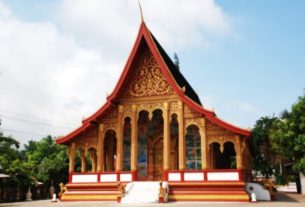
Myanmar power plans could spare the Salween
Newly announced plans to build four major gas-fired power plants could save the pristine river from environmentally destructive hydro-power dams
Myanmar and Thailand have announced plans for major gas power projects, as well as greater moves to adopt renewable energy sources. The news will cheer conservationists battling to prevent large dams being built on major rivers in the north of Myanmar.
Myanmar’s Aung San Suu Kyi-led government aims to tackle the country’s chronic power shortage by building four gas-fired power plants over the next three years.
Officials from the Ministry of Electricity and Energy said the plants, to be located in western Rakhine state and the commercial hub of Yangon, would double the country’s generation capacity, currently at around 3,000 megawatts. They put the total cost of the plants at US$5.2 billion, Reuters reported.
There are also plans to set up ‘mini-grids‘ in rural areas not yet linked to the national power grid. Last year, the French utility EDF signed an agreement with Magway’s regional government to supply electricity via a mini-grid to 8,000 households.
Meanwhile, Thailand’s national oil and gas giant PTT has said it will develop energy and gas businesses with state-owned Electricity Generating Authority of Thailand (EGAT). Both aim to get into renewable energy and energy storage – areas rapidly changing the business of power generation worldwide.
Initial projects will include a liquefied natural gas-receiving terminal and a floating storage re-gasification unit in the Malaysia-Thailand Joint Development Area. The two utilities are also looking towards power plant development in Myanmar.
At first blush, this appears to be good news for conservationists and citizens in Myanmar’s eastern Shan state, many of whom have campaigned for years to prevent large-scale dams from being built on the Salween River.
There has also been confirmation that EGAT and companies behind one of the most controversial projects, the Mong Ton dam, have been told by Myanmar officials to go back to the drawing board. The Myanmar government has reportedly said that the initial plan for a huge dam, which would have inundated the ‘Thousand Islands’ area, an unspoilt wilderness in Shan state, should be redesigned and split in two.
A minister in Suu Kyi’s administration reportedly said in August 2016 that dams were inevitable on the Salween. But the government appears to have now recognized that mega-projects will aggravate ties with major ethnic groups yet to sign peace agreements with the state because of the likelihood of major social and environmental impacts.
Shan activists and groups in other ethnic areas have said that mega-projects should not go ahead in their areas until peace is achieved.
Looking for ‘better projects’
The International Finance Corporation, an arm of the World Bank that seeks to encourage private-sector development in developing countries, has been conducting a review of Myanmar’s eight major river basins and hydropower projects proposed on the country’s major rivers and tributaries since late 2016.
An IFC spokeswoman in Yangon said recently that officials working on a Strategic Environmental Assessment (SEA) had held meetings with groups proposing hydropower projects, as well as local residents and civil society groups “to help the government decide on the path forward” on sustainable power generation. Currently, only about 40% of Myanmar’s residents have access to electricity.
At present, four hydro-projects on the Salween generate 302 megawatts (MW) of power, the IFC spokeswoman said, and two small projects under construction would generate a further 383 MW when completed.
Meanwhile, 15 proposed hydro-projects – including five on the main stem of the Salween – could generate about 16,000 MW. But, she said, “there is no current significant movement on projects on the Salween. Dam projects are not moving forward because of environmental or social impacts [if they are built].
“We’re not seeing much appetite for Salween projects .. the government is looking for better projects to be involved in.” – IFC spokeswoman
The IFC has aimed to help the government make “best choices” for the hydropower sector. She said the SEA commenced under the previous government to assess social and environmental factors, plus “how projects would impact on the ground.”
The assessment aimed to identify areas of low risk, medium risk and high risk, i.e. areas where there is armed conflict nearby or other issues. It also aimed transparently engage all stakeholders, with a recognition that “big ones [rivers] should be conserved,” the spokeswoman said
The IFC seems to be mindful of the World Bank’s checkered record of funding big dams, such as the Nam Theun 2 in Laos, that have met with mixed results. Many activists and conservation groups shudder at the impact of the Nam Theun 2 dam, which set off a frenzied spate of dam building by the Lao government after it decided the country should become the “battery of Southeast Asia” through hydropower exports.
This has opened the way to a series of major dams on the middle section of the Mekong River which conservationists and others say will likely have a major impact on fisheries in downstream Cambodia’s vast Tonle Sap lake and rice growing areas in the Mekong Delta in southern Vietnam.
Some of the dams foreign consortiums have proposed on the Salween would create vast reservoirs that would inundate hundreds of square kilometers. Shan activists blame the plans for increased militarization around sites where dams have been proposed. This has aggravated already strained ties with the Shan and pushed tens of thousands of refugees into Thailand.
Many in Myanmar welcomed former president Thein Sein’s decision in September 2011 to call a halt to the controversial Myitsone Dam project being built by a Chinese conglomerate on the northern reaches of the Irrawaddy, the country’s largest river. But Shan groups have said they fear a secret deal between the Suu Kyi government and Beijing might allow for the construction of a major dam on the Salween instead.
Drowning a ‘Thousand Islands’
The IFC spokeswoman confirmed that the consortium behind the Mong Ton project, which includes EGAT, “had been requested to revise the design and try a cascade” dam model instead. Activists have said the initial Mong Ton proposal would have been an environmental nightmare.
While news that Myanmar is set to build a series of gas-power plants has pleased some Shan groups anxious to stop dams being built on the Salween, Pai Deetes from International Rivers said environmental groups weren’t necessarily “pro-gas” – they want the whole decision-making process improved. “We’re actually demanding a participatory process for energy planning – both for Thailand and Myanmar – so the public is allowed to be involved and all options can be taken into account, including energy efficiency, small-scale power plants and a decentralized system.”
Deetes said she suspects the ‘Drowning a Thousand Islands Video’ shared widely on social media played a role in persuading Suu Kyi’s government to revise the Mong Ton dam proposal so that the pristine wilderness area would be saved.
The Thai Ministry of Energy also revealed last year that the Hat Gyi Dam – another project on the Salween further south in Kayin (Karen) state – had been stopped due to armed conflict. A Thai engineer working for EGAT at the Hat Gyi site was killed in an attack at the site in September 2007.
Source: http://www.atimes.com/article/myanmar-power-plans-spare-salween/

